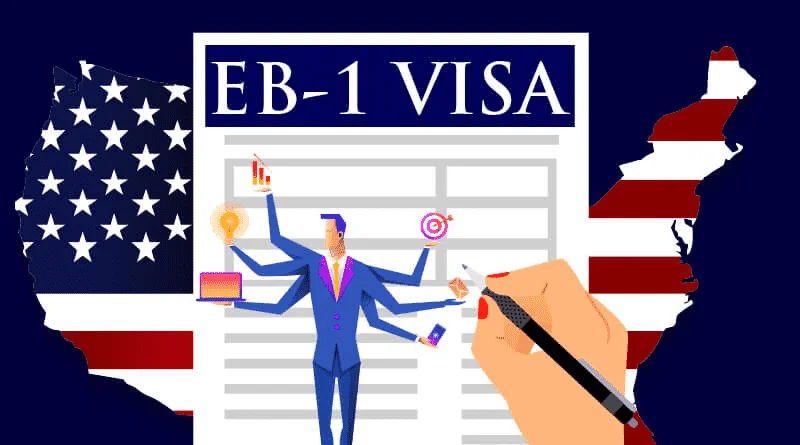
THE HISTORY OF EB1-A: A PATHWAY FOR EXTRAORDINARY INDIVIDUALS
The EB1-A visa which is also known as the ‘Einstein Visa’ is one of the most sought-after visas in the United States. This is because it is for people who can prove that they are outstanding in their respective fields. These fields include science, arts, education, business and athletics. EB1-A visa is one of the subcategories of employment-based visas and its development is closely related to the development of the U. S. immigration laws that targets at bringing the most talented people from around the world. It aims at promoting the economic development of the United States. This article explains the development of the EB1-A visa, its changes, and why it has become a desired visa for exceptional workers across the world. The history of employment-based immigration to the United States can be traced back to the Immigration and Nationality Act of 1952, where different visas were provided for persons wanting to enter the United States based on their skills or their job offers. But, the modern employment-based visa category has emerged after the immigration act of 1990. It also includes the EB1 category.
The Immigration Act of 1990
It was a major legislation which led to a revolution in the U.S. immigration laws. It put in place five preferences for employment-based immigration and aimed at meeting the requirements of different categories of skilled workers. The EB1 category or Employment-Based First Preference was targeted at individuals with extraordinary ability, outstanding professors and researchers and multinational executives. The EB1 category, out of which the EB1-A subcategory was developed, was targeted towards persons of exceptional ability, who were considered to be beneficial to the United States. The act was to ensure that the high achievers are well processed for immigration to the U.S. making it the home of great minds and creators.
EB1-A: for the Best and the Brightest
This is one of the most sought-after visas in the United States. This was based on the thinking that only those people who have already climbed to the top of their fields or professions should be targeted. While applying for EB1-A visas, there is no need to have a job offer or an employer who will support the application. They can apply for themselves which makes it a good choice for people who are outstanding in their respective fields.
Eligibility Criteria
EB1-A applicants must be able to prove that they have received sustained national or international recognition based on their achievements in the field they are working. USCIS processes applications based on a set of ten criteria of which the applicant must meet at least three. These criteria include:
- Receipt of major nationally or internationally recognized awards (for example Nobel Prize, Olympic Medal).
- Membership in prestigious associations where one has to be outstanding to be a member.
- Published material about the applicant in major media outlets.
- The applicant must have made significant original contributions to his or her field.
- Positions held in important organizations. This is because the standard is very high hence the visa is meant to catch people who are not just highly competent but great.
Some of the key events that have occurred in the history of EB1-A are listed below:
The EB1-A visa has also had several key developments which have shaped it and made the criteria and the process of application better.
1. Legislative Intent
This was seen in the creation of the EB1-A category whereby the U.S. government understood the importance of exceptional persons to the nation. The visa was considered by the policymakers as a way of attracting gifted individuals in the fields of innovation, arts, and sports, thus making the U. S to remain at the forefront of innovations across the globe.
2. Notable Beneficiaries
Due to the connection with high-profile persons, the EB1-A visa became widely known to the public. The famous entrepreneur Elon Musk, who is the CEO of Tesla and SpaceX, is used very often as an example of the EB1-A visa recipient. Likewise, foreign-born athletes, scientists and artists have used the visa to advance in the United States and contribute to its cultural and social development.
3. Evolving Adjudication Standards
Thus, as the number of applications increased, USCIS worked on perfecting the adjudication process to make it more consistent and equitable. The guidelines went a mile further to point out that it is not enough to only meet the eligibility requirements, but the applicant must also present compelling evidence of sustained acclaim and impact in the field.
The Role of EB1-A in the U.S. Immigration Policy
The EB1-A visa is one of the most important types of visa in the context of the U. S. immigration policy, as it helps to achieve the goals set by the nation, such as, to attract talented people to contribute to the economic growth, scientific innovation and cultural development in the United States.
1. Economic Impact
EB1-A category is applicable to people who contribute and implement ideas that help the U.S economy grow. Entrepreneurs come up with new ideas and technologies while scientists come up with new technologies that help various industries. The visa category helps the U. S in retaining its competitiveness in the global economy.
2. Advancing Scientific and Technological Innovation
The EB1-A category has been very useful in luring scientists and researchers whose work solves some of the world’s biggest problems. In medicine for instance, or the development of artificial intelligence, EB1-A recipients play an important part in the U. S. leadership in science and technology.
3. Enriching Culture and Society
Artists, musicians and performers who get the EB1-A visas add value to American culture since they come with different ideas and talents. Their contributions help the U.S to be considered as one of the leading cultural powers in the world.
Challenges and Criticism
Nonetheless, it has its drawbacks and controversies in the EB1-A visa.
1. High Standards of Proof
Although the charter’s high bar only permits the best of the best to be admitted, it simultaneously poses a challenge to applicants. This is because sustaining acclaim does not come easily as it involves providing evidence of awards, media coverage and even endorsements by experts.
2. Perception of Elitism
This has however received some criticism because of the emphasis on extraordinary ability has been seen to favour the EB1-A visa for elite persons while other highly skilled persons in less glamorous fields are neglected. Such perception calls for a change in the immigration system that is adaptable to meet the variety of needs of the workforce.
Latest Development in EB1-A Applications
Over the past few years, the EB1-A visa has become quite popular, this being due to the increasing trends in global mobility as well as the increasing attention given to this category.
1. Growth in STEM Fields
Due to advancements in artificial intelligence, renewable energy, and biotechnology, more professionals in the STEM fields are applying for EB1-A visas. This is in line with the visa’s focus on innovation, which is the priority of these fields.
2. Broader Geographic Representation
Despite the fact that it has been mainly applied by candidates from such countries as India and China, now the EB1-A category attracts professionals from all over the world.
3. Policy Updates
The recent policy changes have helped in defining and improving the EB1-A application process in a way that more people who are suitable for it can apply. These changes make sure that the visa is still effective given the current developments across the globe.
Conclusion
The evolution of the EB1-A visa shows its significance in the process of bringing gifted workers to the United States of America. From the Immigration Act of 1990 to the present day, when it plays a significant role in supporting innovation and cultural exchange, the EB1-A category has been an essential part of the U. S. immigration law.
For special people who want to accomplish something big in the United States, the EB1-A visa provides a chance to do so while being of benefit to the country. It is thus safe to say that the visa will continue to be an important way for talented people to contribute to the advancement of America in the future.



